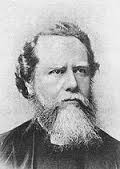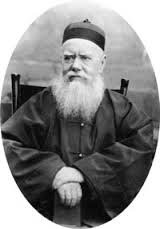<< 10 things missions minded Christians should know
Famous Missionaries of the past are the foundation for modern missions.
Supporting missionaries financially is not a new thing. It has been around since the conception of the first church when Paul and Barnabas travel to foreign lands and help start churches. Even before them, the concept of missions can be found in the Bible if you consider the work of the Lord Jesus Christ. His earthly ministry was one big mission. On the other hand, the modern missions movement has not been around for all that long.
Going from church to church to raise funds so a missionary can go abroad is not found in the Bible. This is not to say that financing a missionary is wrong, it is to say that the approach to missions today is not the same approach that Paul and Barnabas was privy to. Because the approach is different, the vision for missions is affected as well. This is why it is a good idea to study the lives of famous missionaries of the past.
Studying their lives gives a greater vision of the basis for missions. These men and women of old faced a far different approach to missions than the modern missionary does. Knowing what they went through, will ground you in the task of missions. Things that you never thought of will come into focus. Likewise, things that a modern missionary thinks is essential for his work would shrink in its importance.
A large portion of modern day missions is driven by money. Missionaries spend years going around to raise support. Churches boast of how many missionaries they support and display their newsletters like a badge of honor. The idea being, “The more missionaries they support, the bigger the church is.” In the old days, modern mission system was not present and therefore the temptation to boast about how many missionaries you support was not there.
Famous missionaries of the past received a calling and went. Sometimes they were not heard of for years. Some were never heard of again. They moved to the field they were called to. They didn’t look on it as though it was an assignment, but as if the Lord was telling them, “I don’t want you to live here anymore. You are going to cut all ties with this place and move to a place where I will show you. You are finished with this place. It is no longer your home. I am going to show you a new home and you are going to live there.” This is the Biblical model of missions and is evident when you examine the life of the Patriarch Abraham (Gen. 12:1-5).
Not only will examining the life of famous missionaries of the past renew your vision about how missions should work, it will strengthen your bond with the Lord Jesus Christ. These missionaries went through tremendous struggles, the like of which are foreign to modern day missionaries. When seeing the struggles they went through, and how the Lord provided, your knowledge of faith will increase as well. Your faith will not increase, but your knowledge of what faith can be will increase. This is very helpful when you face similar “high-stakes” situations in your future. Because you know you are not the only one who ever experienced a terrible situation, you will be more inclined to turn to God. When He gets involved, your faith increases.
Modern day missions is based on the model found in the lives of famous missionaries of the past. Although it is somewhat altered, it is still based on the example they laid out. Therefore, if you studied about their lives, you would be studying the foundation of modern day missions. You cannot have a strong house built if the foundation is wrong. Likewise, you cannot have a good opinion of modern day missions if you don’t first build a good foundation and study about famous missionaries of the past.
If you are interested in missions at all, studying the lives of famous missionaries is essential. Not because we should go back and do things the way they did. Today we have wonderful technology to help us. They did not have access to such things. Because of air planes, we can be almost anywhere in the world in less than 24 hours. They had sailing vessels and it would take them many months to get where they were going. We have telephones. They had to post a letter that might take six months to arrive. We don’t need to mimic the things they did, but we need to examine the concept and way of life they set forth as an example. This will broaden our perspective and make our commitment stronger.


